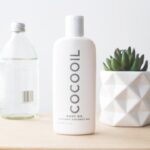When considering beauty treatments, particularly those involving hair removal or skin enhancement, your skin tone and hair color play a crucial role. The contrast between your skin and hair can significantly influence the effectiveness of various procedures. For instance, if you have light skin and dark hair, you may find that laser hair removal is particularly effective.
The laser targets the pigment in the hair, making it easier to remove. Conversely, if you have light hair and light skin, the same treatment may not yield the desired results, as there is less contrast for the laser to target. Moreover, your skin tone can affect how certain products or treatments react with your skin.
For example, individuals with darker skin tones may be more prone to hyperpigmentation after certain procedures. This means that while you might be eager to try a new treatment, it’s essential to consult with a professional who understands how your unique skin tone and hair color will interact with the chosen method. Understanding these nuances can help you make informed decisions that enhance your natural beauty rather than detract from it.
Key Takeaways
- Skin tone and hair color can affect the effectiveness and safety of certain hair removal methods.
- Pregnancy and breastfeeding can limit the hair removal options available due to hormonal changes and skin sensitivity.
- Certain medical conditions and medications can impact the suitability of hair removal methods and increase the risk of complications.
- Recent sun exposure or tanning can make the skin more sensitive and prone to irritation during hair removal.
- Active skin infections or irritations can make hair removal methods more painful and increase the risk of complications.
Pregnancy and Breastfeeding
Pregnancy and breastfeeding are significant life changes that can impact your body in numerous ways, including your skin and hair. During pregnancy, hormonal fluctuations can lead to various skin changes, such as increased pigmentation or acne. If you are considering beauty treatments during this time, it’s vital to consult with a healthcare provider to ensure that any procedures or products you use are safe for both you and your baby.
Some treatments may not be advisable due to potential risks or side effects that could affect your pregnancy. Breastfeeding also requires careful consideration when it comes to beauty treatments. Many products contain ingredients that may not be safe for nursing mothers.
It’s essential to read labels carefully and choose treatments that are specifically formulated to be safe during this period. Additionally, your body may respond differently to treatments while breastfeeding, so what worked for you before may not yield the same results now. Taking the time to research and consult with professionals can help you navigate these changes while maintaining your self-care routine.
Medical Conditions and Medications

Your medical history plays a pivotal role in determining which beauty treatments are suitable for you. Certain medical conditions can affect your skin’s sensitivity or healing ability, making some procedures riskier than others. For instance, if you have a history of psoriasis or eczema, you may need to avoid specific treatments that could exacerbate these conditions.
It’s crucial to disclose any medical issues to your practitioner so they can tailor their recommendations accordingly. Additionally, medications can significantly influence how your skin reacts to various treatments. Some medications can increase photosensitivity, making you more susceptible to sunburn or adverse reactions from laser treatments.
If you are on medication for acne or other skin conditions, it’s essential to discuss this with your provider before undergoing any procedures. They can help you understand how your current medications might interact with the treatments you’re considering, ensuring that you prioritize both safety and effectiveness.
Recent Sun Exposure or Tanning
| Metrics | Values |
|---|---|
| Duration of Sun Exposure | 2 hours |
| SPF of Sunscreen Used | 30 |
| Skin Type | Fair |
| UV Index | 8 |
Your recent sun exposure or tanning habits can greatly impact the health of your skin and the success of beauty treatments.
This is particularly important to consider before undergoing procedures like chemical peels or laser treatments, which can cause adverse reactions on recently tanned skin.
It’s advisable to wait until your skin has returned to its natural tone before proceeding with such treatments. Moreover, sun exposure can lead to long-term effects on your skin’s health, including premature aging and an increased risk of skin cancer. If you’re planning on undergoing any beauty treatments, it’s essential to protect your skin from the sun leading up to the procedure.
Using sunscreen regularly and avoiding direct sunlight can help maintain your skin’s integrity and ensure that you achieve the best possible results from any treatment you choose.
Active Skin Infections or Irritations
If you have an active skin infection or irritation, it’s crucial to postpone any beauty treatments until your skin has healed completely. Conditions such as acne, eczema, or dermatitis can worsen with certain procedures, leading to further irritation or complications. Attempting to treat your skin while it is inflamed or infected can not only hinder healing but also result in unwanted side effects that could have been avoided with a little patience.
Consulting with a dermatologist or skincare professional is essential if you’re experiencing any active skin issues. They can provide guidance on how to manage your condition effectively while also advising when it would be safe to resume beauty treatments. Prioritizing the health of your skin will ultimately lead to better results in the long run, allowing you to enjoy the benefits of any procedures without compromising your skin’s integrity.
History of Scarring or Keloid Formation

Understanding the Risks of Keloid Formation
If you have previously experienced keloids—raised scars that form due to an overproduction of collagen during healing—you may be at a higher risk for developing them again after certain procedures. Treatments like laser therapy or surgical interventions can sometimes trigger keloid formation in susceptible individuals, making it essential to discuss this history with your practitioner.
Choosing the Right Treatment for Your Body
Understanding your body’s healing response is vital for selecting appropriate treatments. If you know that you are prone to scarring, opting for less invasive methods may be a safer choice. Your practitioner can help guide you toward options that minimize the risk of scarring while still achieving your desired results.
Prioritizing Safety and Aesthetic Goals
By being proactive about your history with scars and keloids, you can make informed decisions that prioritize both safety and aesthetic goals.
Recent Waxing, Plucking, or Electrolysis
If you’ve recently undergone waxing, plucking, or electrolysis, it’s important to consider how these methods may affect any upcoming beauty treatments. These hair removal techniques can leave your skin sensitive and irritated, which could complicate further procedures like laser hair removal or chemical peels. It’s generally recommended to wait a few weeks after such treatments before pursuing additional procedures to allow your skin time to recover fully.
Additionally, recent hair removal methods can impact the effectiveness of subsequent treatments. For example, if you’ve waxed an area before considering laser hair removal, the hair follicles may not be in their optimal growth phase for effective treatment. Discussing your recent hair removal history with your practitioner will help them tailor their approach and ensure that you achieve the best possible results from any beauty treatment.
Unwanted Hair in Certain Areas
Dealing with unwanted hair in specific areas can be a source of frustration for many individuals. Whether it’s facial hair, underarm hair, or unwanted body hair, finding an effective solution is often a priority. Various methods exist for hair removal, including shaving, waxing, and laser treatments; however, each comes with its own set of considerations based on your unique circumstances.
When addressing unwanted hair, it’s essential to consider factors such as pain tolerance, skin sensitivity, and long-term goals. For instance, if you’re looking for a permanent solution, laser hair removal might be an ideal option; however, it requires multiple sessions and may not be suitable for everyone based on their skin tone and hair color. On the other hand, temporary methods like shaving or waxing may provide immediate results but require regular maintenance.
Understanding your options and consulting with a professional can help you find the most effective approach tailored to your needs and preferences.
From understanding how your skin tone and hair color influence treatment effectiveness to considering medical conditions and recent sun exposure, being informed is key to achieving desired results safely and effectively.
By taking the time to assess these elements and consulting with professionals when necessary, you can embark on a journey toward enhanced beauty with confidence and care for your skin’s health.
If you are considering laser hair removal, it is important to know when not to use this treatment. One article that provides valuable information on this topic is this blog post from In Laser Hair Removal. This article discusses situations where laser hair removal may not be suitable, such as if you have certain medical conditions or skin conditions that could be aggravated by the treatment. It is always important to consult with a professional before undergoing any cosmetic procedure to ensure it is safe and appropriate for your individual needs.
FAQs
What is laser hair removal?
Laser hair removal is a cosmetic procedure that uses a concentrated beam of light (laser) to remove unwanted hair. The laser targets the pigment in the hair follicle, damaging it and inhibiting future hair growth.
When should laser hair removal not be used?
Laser hair removal should not be used on individuals with certain medical conditions, such as skin cancer, active infections, or a history of keloid scarring. It is also not recommended for pregnant women or individuals with certain skin types or hair colors that are not effectively targeted by the laser.
Are there any specific areas of the body where laser hair removal should be avoided?
Laser hair removal should be avoided on the eyelids and surrounding areas, as the eyes are extremely sensitive to the laser. It is also not recommended for use on the genitals or mucous membranes.
Can laser hair removal be used on all skin types and hair colors?
Laser hair removal is most effective on individuals with light skin and dark hair, as the contrast between the skin and hair color allows the laser to effectively target the hair follicles. It may not be as effective on individuals with darker skin tones or lighter hair colors.
Are there any potential side effects or risks associated with laser hair removal?
Some potential side effects of laser hair removal include temporary skin irritation, redness, and swelling. In rare cases, it can also cause changes in skin pigmentation or scarring. It is important to consult with a qualified and experienced practitioner to minimize these risks.






